Bei Mir Bistu Shein / Bei Mir Bist Du Schön (Schoen): selected early recordings, 1937-1938
__________________________
This article was originally published on 6 August 2010 — latest edit, 24 October 2022. The article consists of two parts:
- part 1 – Introduction; chronological listing of 1937-1938 recordings; 1937 recordings, with information about each recording (page 1, this page)
- part 2 – 1938 recordings, with information about each recording (page 2)
__________________________
Introduction
 Bei Mir Bistu Shein (Yiddish: בייַ מיר ביסט דו שיין, “To Me You’re Beautiful”) is a popular Yiddish song composed by Jacob Jacobs (lyricist) and Sholom Secunda (composer) for a Yiddish musical, I Would If I Could (in Yiddish, Men Ken Lebn Nor Men Lost Nisht, “[Y]ou could live, but they won’t let you”) in 1932 that closed after one season. The score for the song transcribed the Yiddish title as Bay mir bistu sheyn.[1]
Bei Mir Bistu Shein (Yiddish: בייַ מיר ביסט דו שיין, “To Me You’re Beautiful”) is a popular Yiddish song composed by Jacob Jacobs (lyricist) and Sholom Secunda (composer) for a Yiddish musical, I Would If I Could (in Yiddish, Men Ken Lebn Nor Men Lost Nisht, “[Y]ou could live, but they won’t let you”) in 1932 that closed after one season. The score for the song transcribed the Yiddish title as Bay mir bistu sheyn.[1]
The original Yiddish version of the song (in C minor) is really a dialogue between two lovers who share lines of the song.
In 1937, Sammy Cahn heard a performance of the song, sung in Yiddish by African American performers Johnnie and George at the Apollo Theater in Harlem. Grossinger’s Catskill Resort Hotel proprietor Jenny Grossinger claimed to have taught the song to Johnnie and George while they were performing at the resort.[2] On seeing the audience response, Cahn convinced his employer to buy the rights so that he together with Saul Chaplin could rewrite the song with English language lyrics and rhythms more typical of swing music. The songwriters, Sholom Secunda and Jacob Jacobs (see photos below), sold the publishing rights to the song for a mere US $30. Cahn then convinced the still unknown Andrews Sisters to perform the song (recorded November 24, 1937). It became their first major hit, earning them a gold record, the first ever to [be awarded to] a female vocal group. — adapted from Wikipedia
Yiddish Radio Project provides a similar description of the “discovery” of the song by Sammy Cahn, but indicates that the publishing rights had been sold by the songwriters years earlier:
Lyricist Sammy Cahn and pianist Lou Levy were catching a show at the Apollo Theater in Harlem when two black performers called Johnnie and George took the stage singing “Bei Mir Bist Du Schoen” — in Yiddish. The crowd went wild. Cahn and Levy couldn’t believe their ears. Sensing a hit, Cahn convinced his employer at Warner Music to purchase the rights to the song from the Kammen Brothers, the twin-team music entrepreneurs who had bought the tune from Secunda a few years back for the munificent sum of $30.
(above, left) Sholom Secunda with the Andrews Sisters; (right) Jacob Jacobs — source: Milken Archive of Jewish Music (milkenarchive.org)
Regarding the sale price, in a 2010 article titled “Bay mir bistu sheyn: A brief history of Yiddish theatre’s most enduring song,” published at the Milken Archive of Jewish Music, Sholom Secunda is quoted (from a 1961 New York Times interview) as saying:
At the time, it was considered good publicity in Yiddish theater circles to have your songs published. Most of the time we would publish our songs at our own expense. If you could sell it to a publisher later on, you were that much richer. I had sold hundreds of songs for thirty dollars and was happy to get the money for this one. Jacobs and I split 50–50.
______________________
On the Title:
ASCAP’s online ACE Repertory gives the primary title of the Chaplin-Cahn rewrite of the original as Bei Mir Bist Du Schon. The absence of an umlaut over the “o” in “Schön” appears to be due to a technical limitation of the site, since none of the 37 variants of the title listed (as of 19 August 2020) have diacritics either. See my Jan 01, 2012 @ 21:19:15 comment regarding reasons for variant spelling and pronunciation in recorded versions. ACE credits the four songwriters mentioned above: Sholom Secunda, Jacob Jacobs, Saul Chaplin, and Sammy Cahn.
 The label (right) of the 1937 Andrews Sisters recording, with Decca catalog number 1562 B, bears the title “Bei Mir Bist Du Schön (Means That You’re Grand).” Early covers of the 1937 song seem to have come primarily under this title, with or without the subtitle, or the close variant “Bei Mir Bist Du Schoen,” in which “ö” is replaced by “oe” in the final word.
The label (right) of the 1937 Andrews Sisters recording, with Decca catalog number 1562 B, bears the title “Bei Mir Bist Du Schön (Means That You’re Grand).” Early covers of the 1937 song seem to have come primarily under this title, with or without the subtitle, or the close variant “Bei Mir Bist Du Schoen,” in which “ö” is replaced by “oe” in the final word.
Regarding what seems to be an odd pronunciation of this final word in the title phrase (in versions sung in English), Wikipedia provides an explanation in reference to the later popular song “Danke Schoen”:
The word schön [beautiful, handsome] is pronounced throughout in the song as it is in Yiddish, שיין [ˈʃɛjn], approximately rhyming with “pain,” rather than as German schön [ˈʃøːn] (sh-URN). Note that the German letter “ö” can also be written using the older typography “oe”, of which the umlauted O is a typesetting contraction, when umlauts are unavailable or not readily accessible.
Greta Keller’s and the Swedish versions included below are exceptions. In the Swedish versions, “schön” is sung in a dialect approaching standard German. The word is evidently rhymed with Swedish words. Keller sings the song in English with the mixed language title phrase intact, but she sings the word “schön” in a standard German dialect. Her version therefore lacks the rhymes with “explain” and “refrain” heard in the Andrews Sisters version and most covers sung in English.
According to various sources, the title phrase is not a common expression in German and sounds awkward in that language, but it may have (so they say) various literal interpretations, including the following: “By me, you are beautiful,” “(Standing) With me, you are beautiful,” and “Compared to me, you are beautiful.”
English translation summary:
- bei mir, bay mir (romanized Yiddish) = to me
- bistu / bist du (romanized Yiddish / German) = you are
- shein, sheyn, shayn, etc. (romanized Yiddish) = beautiful
- schön (German) = beautiful or handsome
- schoen = schön (G.) — “Ö” or the letter “o” with umlaut is frequently replaced by “oe” in languages without the umlaut in the regular alphabet. According to the Wikipedia quote immediately above, “oe” predates “ö” in typography usage.
Original 1932 Yiddish lyric (in Hebrew script), romanized Yiddish transliteration, and translations into French and English:
__________________
A final note on the shayn to schön modification: In a comment at the lyrics forum mudcat.org, dated 7 January 2006, Bev and Jerry said:
According to Klezmer! Jewish Music from Old World to Our World by Henry Sapoznik [book published in 1999], this song was popular with klezmer bands in the 1930s and the final word of the title was written “shayne” when transliterated to English. When the Andrew Sisters recorded it, the last word was written as “schoen” mit an umlaut over the “o” [It’s spelled “Schön” on the label.] so it would appear to be from German instead of yiddish in order to sell more records in those antisemitic times.
Bei Mir Bistu Shein (m. Sholom Secunda, w. Jacob Jacobs)
Budapest Klezmer Band — Yiddish lyric version, performed by a currently active band, founded in 1990; video uploaded by hit004541 on 22 March 2008
website:
_______________________
Selected 1937-1938 recordings, listed chronologically
1937 recordings (page 1):
- Andrews Sisters –recorded on Wednesday, 24 November 1937; issued on the 78 rpm single Decca 1562 as the B-side of “Nice Work If You Can Get It”
- Glen Gray and the Casa Loma Orchestra, vocal: Pee Wee Hunt – recorded on Wednesday, 8 December 1937; issued on the single Decca 1575, b/w “Let’s Make It a Life-time”; released in 1938 — discography: 45worlds.com, Discogs.com, Discography of American Historical Recordings, 78discography.com
- Music in the Russ Morgan Manner, vocal: Russ Morgan — recorded on Friday, 10 December 1937; issued on the 78 rpm single Brunswick 8037, c/w “I Double Dare You” — possibly also issued on a version credited to “Russ Morgan & His Music”
- Music in the Russ Morgan Manner, vocal: Russ Morgan — issued on (France?) Brunswick A 81454; video provider indicates that it was recorded on Friday, 10 December 1937
- Guy Lombardo and his Royal Canadians — recorded on Wednesday, 15 December 1937; issued on Victor 25739, b/w “It’s Easier Said Than Done”
- Dolly Dawn and her Dawn Patrol — recorded on Friday, 17 December 1937, and issued on Vocalion 3908, c/w “Two Dreams Got Together”
- Jerry Blaine and his Stream Line Rhythm, vocals: Phyllis Kenny and chorus — recorded on Friday, 17 December 1937; issued as Bluebird 7344-A, b/w “The Big Dipper” (Larry Clinton)
- Benny Goodman and his Orchestra with vocal by Martha Tilton — from a broadcast transcription recorded live at the Madhattan Room of the Hotel Pennsylvania in New York City, on Saturday, 18 December 1937
- Benny Goodman Quartet, vocal Martha Tilton — Victor 25751 (Side A), recorded on Tuesday, 21 December 1937
- Ella Fitzgerald & Her Savoy Eight — recorded for Decca on Tuesday, 21 December 1937, in New York City
- Belle Baker with orchestra directed by Gene Kardos — recorded on Tuesday, 21 December 1937; issued on Brunswick 8042, c/w “You’re a Sweetheart”
- Kate Smith — recorded on Tuesday, 28 December 1937; issued on Victor 25752, c/w “There’s a Gold Mine in the Sky”
- Benny Goodman Quartet plus Ziggy Elman, vocal Martha Tilton — Victor 25751 (Side B), recorded on Wednesday, 29 December 1937
- Maurice Winnick and his Sweet Music, vocal: Al Bowlly — recorded on Wednesday, 29 December 1937; issued on Decca (UK) F-6591, c/w “Kiss Me Goodnight”
- Arthur Tracy (as “The Street Singer”) — recorded on Thursday, 30 December 1937; issued on Decca 1610, c/w “Shake Hands with a Millionaire”
1938 recordings: (page 2)
- Al Bowlly with an unidentified studio orchestra — recorded on Tuesday, 4 January 1938; issued on HMV BD-493 (UK), and HMV EA-2087 (Australia)
- Milt Herth Trio — recorded on Friday, 7 January 1938; issued on Decca (US) 1612, b/w “The Big Dipper”
- Greta Keller – recorded on Wednesday, 12 January 1938 in London; issued on (UK) Decca F. 6603
- Adrian Rollini Quintet, vocal: Sonny Schuyler – recorded on Tuesday, 18 January 1938; issued on Decca (US) 1638, c/w “Bill”
- Carroll Gibbons and the Savoy Hotel Orpheans, vocal: George Melachrino — recorded on Sunday, 23 January 1938; issued on Columbia (UK) FB1885, and Columbia (France) DF 2328, and Columbia (Romania) DR 2008
- Al Bowlly with Lew Stone and the Monseigneur Band — aircheck or broadcast transcription recorded on Wednesday, 2 February 1938, according to the Al Bowlly Discography at memorylane.org
- Nilo Menendez and his Orchestra — recorded on Monday, 7 February 1938; issued on Decca (US) 1688, c/w “Bruca Manigua”
- Jack Harris and his Orchestra — issued in February 1938 on HMV B.D.5331, b/w “Once in a While” (HMV BD5000+ discography, pdf) [recording not yet found as of 5 January 2016]
- Billy Cotton and His Band — issued as Rex (UK) 9231-A, b/w “Linger Longer Island,” according to a search of the Rex catalog at 78rpm Record Search; it’s not clear whether “Mar 1938” indicates the recording date, or the date the single was issued
- Ady (Eddie) Rosner et son Orchestre, refrain chanté par le Trio Vocal — recorded at la Salle Pleyel, Paris in April 1938, according to the video provider; issued on Columbia (France) DF 2355
- Judy Garland — recorded on Tuesday, 21 June 1938 for the film Love Finds Andy Hardy (1938), but cut prior to filming; includes special lyrics (lyricist unknown)
- Cora Green with Leon Gross and his Orchestra (credited as “Leon Gross’ Orchestra”) — in the 1938 film Swing!
- Harry Roy & his Orchestra — Odeon (UK) OF 5613, 1938(?)
- Henry Jacques & his Correct Tempo Dance Orchestra — issued in 1938 on HMV B.D. 5336 (HMV BD5000+ discography, pdf)
- Léo Marjane accompagnée par Wal-berg et son Orchestre — recorded on Thursday, 5 May at Studio Pathe – 79 avenue de la Grande Armee, XVIIe arr. Paris; issued in 1938 on Disque Gramophone K-8113 as the B-side of “Je vous ai souri”
- Jean Peyronnin, A. Tedeschi et leur célèbre Orchestre Musette; refrain chanté par Jan Lambert — recorded in Paris, May 1938; issued on Idéal n° 13.597
- Tomas & ses Merry Boys — recorded in Paris in 1938; issued on Odeon (France) 279.441, matrix# KI 8515
- Irmgaard Österwall med Orkester — Swedish lyric version recorded on Tuesday, 12 April 1938; issued as Scala 147a, b/w “Vieni… vieni…”
- Zarah Leander med Einar Groth’s Orkester — Swedish lyric version recorded on Thursday, 21 April 1938; issued in 1938 on Odeon (Sweden) D 2967 (matrix SA 255 956), b/w “Budapest” — Swedish lyric by Tage Tall
- Sten Aller (Lasse Dahlquist) with Cameo-Orkestern — Swedish lyric version recorded in Stockholm, Sweden on Monday, 3 October 1938
- Orkiestra “Syrena Record”, directed by Henryk Wars, vocal: Mieczysław Fogg; issued in 1938; this is a Polish lyric version titled “Ty masz dla mnie coś,” with words by Andrzej Włast
- Rita Drangsholt — According to the video provider, this Norwegian lyric version was recorded in 1938 or ’39 and issued on Rex Records, a UK-based company
________________________
1937 recordings
Bei Mir Bist Du Schön (or “Schoen”) music: Sholom Secunda; words, original Yiddish: Jacob Jacobs / words, English version: Saul Chaplin and Sammy Cahn — See above notes regarding songwriting credits
Andrews Sisters – recorded on Wednesday, 24 November 1937; issued on the 78 rpm single Decca 1562 as the B-side of “Nice Work If You Can Get It”
.
Glen Gray and the Casa Loma Orchestra, vocal: Pee Wee Hunt – recorded on Wednesday, 8 December 1937; issued on the single Decca 1575, b/w “Let’s Make It a Life-time”; released in 1938
discography:
VBR MP3 audio file (4.9 MB), from archive.org:
.
Music in the Russ Morgan Manner, vocal: Russ Morgan — recorded on Friday, 10 December 1937; issued on Brunswick 8037, c/w “I Double Dare You” — There may also be a version of this single credited to “Russ Morgan & His Music.”
.
(below) Music in the Russ Morgan Manner, vocal: Russ Morgan — issued on (France?) Brunswick A 81454; video provider indicates that it was recorded on Friday, 10 December 1937
I initially mistook this for the same recording as the one above, Brunswick 8037, until careful comparison revealed differences. While the same arrangement is evidently used in each, the vocals are similar but not identical. Even the enunciation of the first five words of the chorus — the verse is omitted in each — the title phrase, is subtly different in the two versions. For a clearer distinction, compare the phrase “Each language only helps me” in the two recordings. In the first, there is a pause (at 1:21) between “helps” and “me.” In the second (1:37), there isn’t.
.
Guy Lombardo and his Royal Canadians — recorded on Wednesday, 15 December 1937; issued on Victor 25739, b/w “It’s Easier Said Than Done”
.
Dolly Dawn and her Dawn Patrol — recorded on Friday, 17 December 1937, and issued on Vocalion 3908, c/w “Two Dreams Got Together”
.
Jerry Blaine and his Stream Line Rhythm, vocals: Phyllis Kenny and chorus — recorded on Friday, 17 December 1937; issued on Bluebird 7344, b/w “The Big Dipper” (Larry Clinton)
.
Benny Goodman and his Orchestra with vocal by Martha Tilton — from a broadcast transcription recorded live at the Madhattan Room of the Hotel Pennsylvania in New York City, on Saturday, 18 December 1937. I’ve dated it in accordance with the LP Benny Goodman at the Madhattan Room, Dec. 18, 1937, Sunbeam SB 126*, released c. 1972, and the 1995 CD The Complete 1937 Madhattan Room Broadcasts, Vol. 6, Viper’s Nest Gold VN 176.
.
(below) Benny Goodman Quartet and Benny Goodman Quartet with Ziggy Ellman – 1937 — both sides of the 78 rpm single Victor 25751 are included in the video, each with vocal by Martha Tilton, with side B beginning at about 3:33
- Victor 25751 (Side A) Benny Goodman
Quartet — recorded on Tuesday, 21 December 1937 - Victor 25751 (Side B) Benny Goodman Quartet, [plus] Ziggy Elman (trumpet) — recorded on Wednesday, 29 December 1937 [Bravura trumpet parts by Elman lead the long interlude and the coda.]
.
Ella Fitzgerald & Her Savoy Eight — recorded for Decca on Tuesday, 21 December 1937, in New York City
.
Belle Baker with orchestra directed by Gene Kardos — recorded on Tuesday, 21 December 1937; issued on Brunswick 8042, c/w “You’re a Sweetheart”
.
Kate Smith — recorded on Tuesday, 28 December 1937; issued on Victor 25752, c/w “There’s a Gold Mine in the Sky”
________________
Maurice Winnick and his Sweet Music, vocal: Al Bowlly — recorded on Wednesday, 29 December 1937; issued on (UK) Decca F-6591, c/w “Kiss Me Goodnight“
.
Arthur Tracy (as “The Street Singer”) — recorded on Thursday, 30 December 1937; issued on (US) Decca 1610 (different catalog number on Australian release displayed in the video), c/w “Shake Hands with a Millionaire”
.
Orchestre Sondor — (dated 1937 by the video provider) recording date unknown; issued on (Belgium) Sondor P7002
______________________
* See also the Benny Goodman on Sunbeam Records discography at linkclub.or.jp.
_______________________
Continue on to page 2 of 2. – Page 2 features 1938 recordings of the song.
Pages: 1 2




















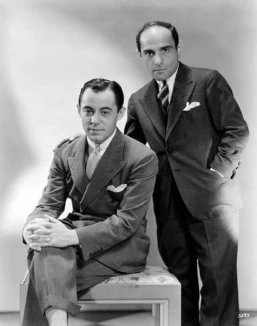

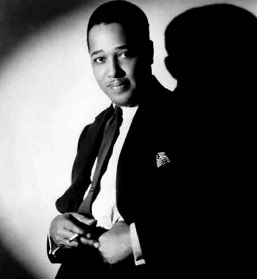


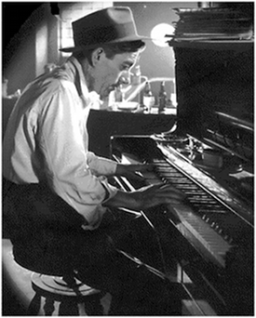
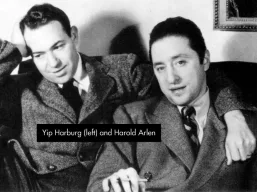




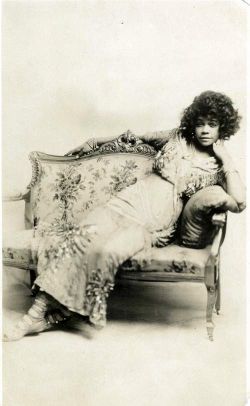










Jan 01, 2012 @ 16:46:58
Thanks for sharing this. I received info on it in email a few days ago and couldn’t get to it via email. I searched the site and found it. I love it.
Thanks
LikeLiked by 1 person
Jan 01, 2012 @ 21:19:15
This response has been significantly revised. The latest edit was on 23 January 2014.
____________________________
RCohen, You’re welcome. Perhaps I included too much explanation regarding the titles and lyrics. This was primarily done out of curiosity. I’d occasionally noticed variant spellings in the titles of different versions, and wanted to know why this was so. Reasons for spelling and pronunciation variation among recorded versions include the following:
LikeLike
Feb 18, 2012 @ 21:55:43
I thoroughly enjoyed all the information, and listening to the various versions. Thanks for all your research!
LikeLiked by 1 person
Jan 03, 2013 @ 08:59:30
A lovely presentation of a delightful story and record samplings of an old chestnut.
LikeLiked by 1 person
Jan 03, 2013 @ 22:21:24
Thanks, Mike. I may be doing some more 1930s songs soon. Snooping around a bit lately.
LikeLike
Feb 08, 2013 @ 02:27:46
Great article!
To answer your question about “bist du” being interrogative: in German, the verb is mostly fixed at the second position. To illustrate with the verb “gehen” (to go), if you say “Ich gehe heute am Strand” (I’m going to the beach today), but want to emphasize the timeframe, you’d say “Heute gehe ich am Strand” (today I’m going to the beach). So the word order reads perfectly natural in German.
LikeLiked by 1 person
Feb 08, 2013 @ 03:14:27
Nathan,
Thanks very much for the brief lesson in German grammar! I’ve been a bit lazy about following up on that question.
LikeLike
Jul 02, 2013 @ 05:23:54
Looking for a copy of piano music for Bei Mir Bitz du Shoen 4 part harmony, women. Could you help me?
Lillian
LikeLiked by 1 person
Jul 02, 2013 @ 21:56:30
Hi Lillian,
Wish I could help, but I was unable to find the requested item in Google searches. Will certainly notify you if I happen to find one. — doc
LikeLike
Jan 26, 2015 @ 14:21:06
Please contact me if you still need a copy of Bei Mir Bist Du Schon.
LikeLiked by 1 person
Mar 31, 2014 @ 18:40:44
The song was also recorded in June 1938 by Judy Garland for the film, LOVE FINDS ANDY HARDY. Unfortunately it was not included in the film, but the song has been available for years on many Judy Garland collections. It’s quite a unique take on the song – starting very slow and bluesy then taking off in full swing with some parody of the song added to it.
LikeLiked by 1 person
Mar 31, 2014 @ 23:13:31
Kevin,
Thanks. I very much appreciate you’re taking the time and effort to provide this information.
I found the recording in a Russian video library, but I haven’t a good video embedding tool for non-YouTube libraries which WordPress doesn’t provide a shortcode for since the VodPod Firefox tool disappeared a couple of years ago. There’s Gigya. However, my attempts to use it fail to produce functioning players far more often than not. I’ll look for an audio file of the recording when I find some time.
LikeLike
Oct 14, 2014 @ 16:22:35
Kevin,
I’ve added two players containing audio files of the 1938 Judy Garland recording today. Thanks again for your help.
[10 April 2021 note: These audio players are now on page 2 of the feature.]
LikeLike
Apr 04, 2017 @ 09:52:26
WONDERFUL to READ
LikeLiked by 1 person
Apr 04, 2017 @ 22:01:44
Thanks, Björn
LikeLike